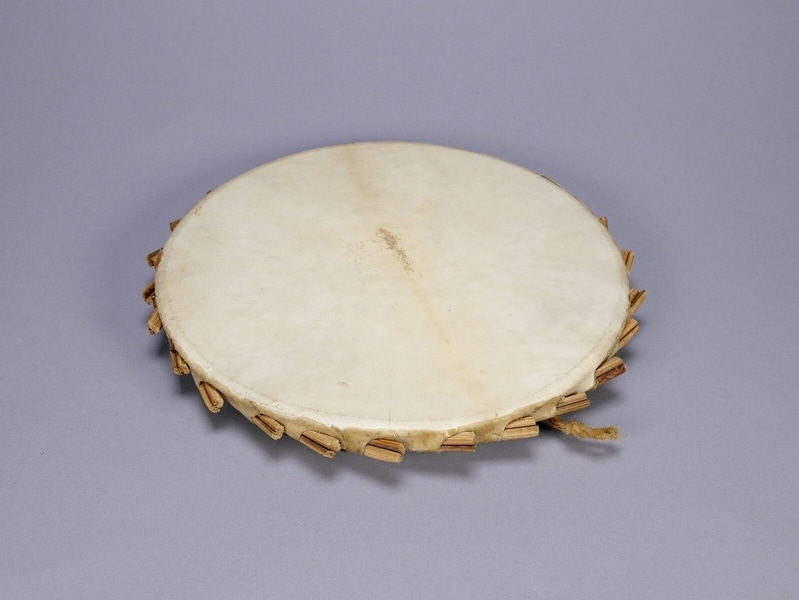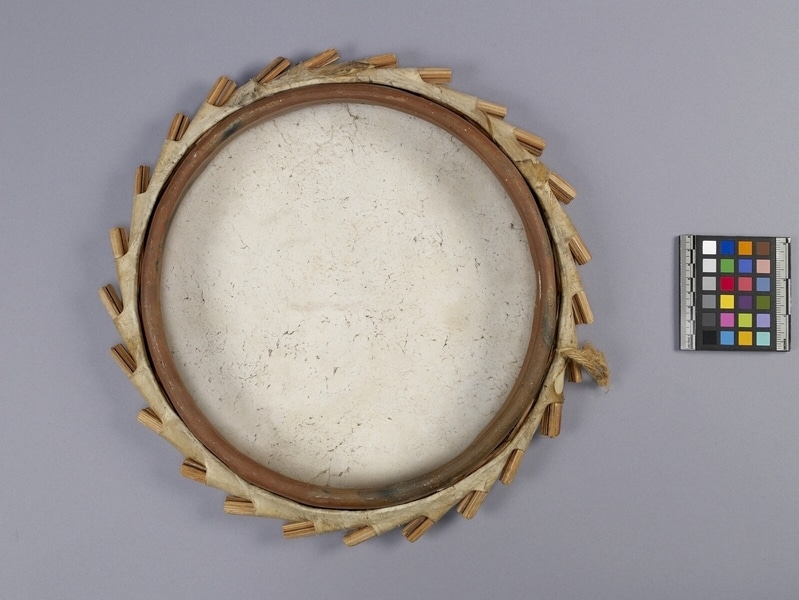Drum Item Number: Af473 from the MOA: University of British Columbia




Description
Round leather drum secured to ceramic base by wooden pegs driven through the overlapped then glued leather. Drum head is white. The ceramic ring is red. There is a fibrous hook.
History Of Use
The Sakara drum is one of the lead drums used in the Sakara genre of music. This style of music, that possibly originated from Yoruba Muslims influenced by the Nupe region, spread between 1914 to 1925. Other instruments in the Sakara ensemble included: móló, a stringed lute, and igba calabashes beaten with the hands. The móló was later replaced by the gòjé, a single-stringed fiddle of the Hausa, and the Sakara drum replaced the gòjé as the lead. As the lead drum, the iya ilu (mother drum) Sakara signalled changes in tempo and style. The drummer playing the lead Sakara called out names of people they knew and praised them. Typically people would shower the drummers with money as they sang their praises. It was common for the drummer to comment on matters of society through the use of proverbs. The Sakara drum was used in ensembles performed at weddings, naming ceremonies, wakes, and Islamic festivals. In more recent times, it is still being used in these social and religious settings, including Christian events. As a talking drum, Sakara can be seen to symbolically represent Àyànàgalú, the drum orisa (deity or spirit).
Item History
- Made in Nigeria before 1972
- Collected during 1972
- Owned by Andrew Stewart and Jessie Stewart before February 8, 1980
- Received from Andrew Stewart (Donor) and Jessie Stewart (Donor) on February 8, 1980
What
Who
- Culture
- Yoruba
- Previous Owner
- Andrew Stewart and Jessie Stewart
- Received from
- Andrew Stewart (Donor) and Jessie Stewart (Donor)
Where
- Holding Institution
- MOA: University of British Columbia
- Made in
- Nigeria
When
- Creation Date
- before 1972
- Collection Date
- during 1972
- Ownership Date
- before February 8, 1980
- Acquisition Date
- on February 8, 1980
Other
- Condition
- good
- Accession Number
- 0590/0020